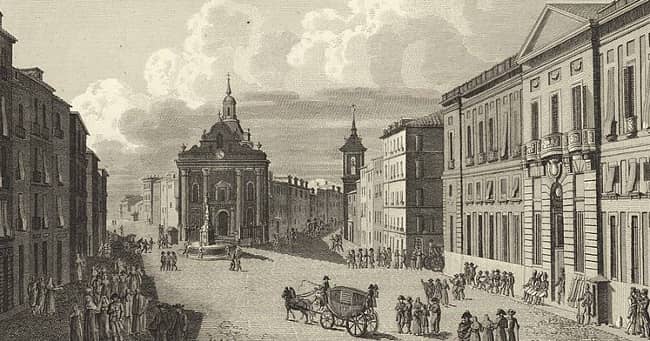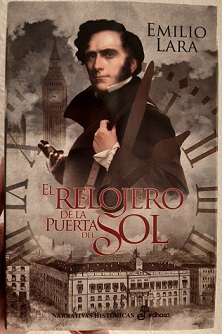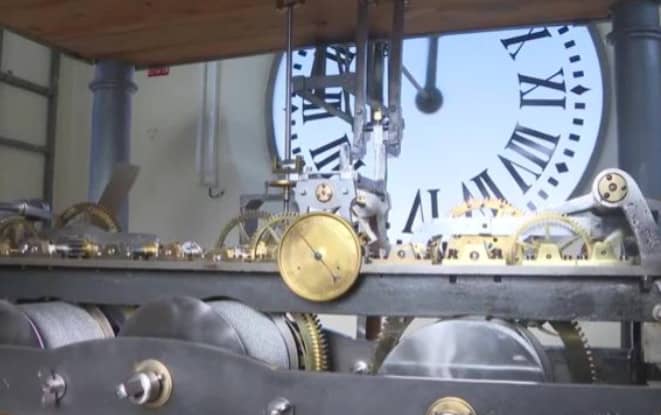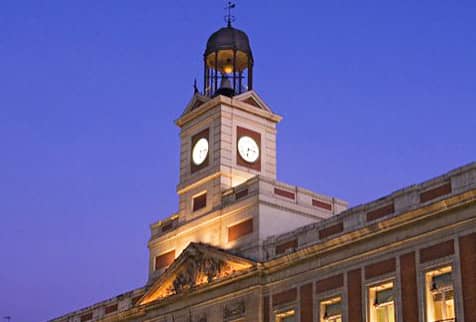
Puerta del Sol Clock History and a Famous Watchmaker
Standing as one of the most important icons of Madrid, the Puerta del Sol clock hides the interesting history of a magnificent watch.
Nowadays, when watching Puerta del Sol clock we do not think about how important it is to know the time and how difficult it must have been in the past. About one or two centuries ago, telling the time was a privilege reserved for the wealthy classes who could afford this luxury. Hence the importance of public clocks, cafés and bells ringing. It was evident that a good public clock was needed in the centre of the Spanish capital, precisely where the roads converged at Kilometre 0. A clock had already existed in the now defunct church of Buen Suceso since 1773, although it only had a hand for the hours. This created a host of problems and ended up generating a lot of protests among madrileños. This was even reported in various newspapers until, in 1848, a new mechanism was commissioned for the clock and gas lights were installed on the inside to make the dial visible at night. However, the clock still did not work properly and the new system was a failure.

When the Buen Suceso church was demolished in 1854, they wanted to move the clock to the Casa de Correos (then known as the Casa de Gobernación), but they ended up installing a different one made by Tomás de Miguel. Soon after, the remodelling of the Puerta del Sol began, giving it its current shape. The clock tower was also modified by adding a large ball that was to fall at 12 o’clock. The clock worked inaccurately and got joked about comparing it to the politicians in the building.

A very singular character appears here: the watchmaker José Rodríguez Losada. Born in Leon, Losada fled the family home when he lost a cow. He ended up enlisted in the army during the Liberal Triennium (1820-1823) and was persecuted during the Fernandine repression after the return of absolutism. He ended up in exile in London, where he worked cleaning in a watchmaker’s shop until the owner hired him as an apprentice. He would eventually become one of the most renowned watchmakers in the English capital, making watches for half of London’s nobility and even restoring Big Ben.

Losada had already made high-precision instruments for the Spanish Navy and received multiple decorations from the government despite living in London. During a stay at the Hotel París in Madrid (now Apple) he saw the Gobernación clock. Losada was petrified witnessing the malfunction.
It took him three years to build the clock in London. On 6 November 1866, Losada’s clock was inaugurated in the presence of Isabella II. It has been telling the time with extreme precisión for more than 150 years, except for minor damage in the Civil War and the some minor adjustments.

The Losada watchmaker’s shop (1981), named after the original watchmaker, has been in charge of the clock since 1996. Ninety-eight percent of its parts are original. Any of its parts can be disassembled without having to dismantle the machinery, which greatly facilitates its maintenance.
Losada used to have gathering at his workshop at 105 Regent Street with other Spanish liberals in exile. The poet José Zorrilla would say about him:
Losada es un gran mecánico
Que alcanzó inmenso renombre,
Y, no obstante, vale el hombre
Más que su reputación.
Aunque seco, cejijunto
Y algo brusco en sus modales,
Leal entre los leales,
Tiene de oro el corazón.
If you want to know that this means and know more about Puerta del Sol, Hotel París or the clock, feel free to join one of our free tour Madrid.

We will be waiting for you with open arms.